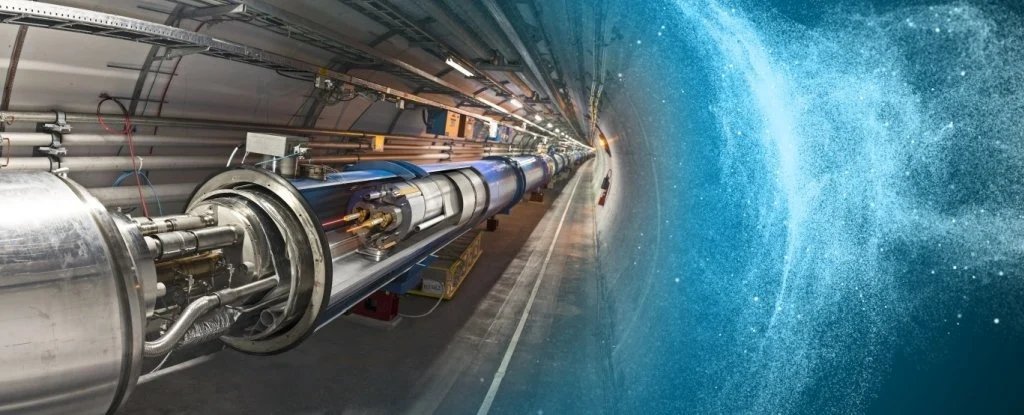Products You May Like
Europe’s Large Hadron Collider has started up its proton beams again at unprecedented energy levels after going through a three-year shutdown for maintenance and upgrades.
It only took a couple of days of tweaking for the pilot streams of protons to reach a record energy level of 6.8 tera electronvolts, or TeV. That exceeds the previous record of 6.5 TeV, which was set by the LHC in 2015 at the start of the particle collider’s second run.
The new level comes “very close to the design energy of the LHC, which is 7 TeV”, Jörg Wenninger, head of the LHC beam operation section and LHC machine coordinator at CERN, said today in a video announcing the milestone.
When the collider at the French-Swiss border resumes honest-to-goodness science operations, probably within a few months, the international LHC team plans to address mysteries that could send theories of physics in new directions.
For now, Wenninger and his colleagues are sending separate beams consisting of a relatively small number of protons through the collider’s 17-mile-round (27-kilometer-round) underground ring of superconducting magnets.
Engineers want to make absolutely sure that the collider can be operated safely in the wake of the changes made during the shutdown before they start high-energy collisions – and avoid a costly repair operation like the one that had to be done shortly after the LHC was turned on for the first time in 2008.
“The machines and facilities underwent major upgrades during the second long shutdown of CERN’s accelerator complex,” CERN’s director for accelerators and technology, Mike Lamont, explained in a news release.
“The LHC itself has undergone an extensive consolidation program and will now operate at an even higher energy and, thanks to major improvements in the injector complex, it will deliver significantly more data to the upgraded LHC experiments.”
During the LHC’s first run, scientists collected data that pointed to the Nobel-winning discovery of the Higgs boson in 2012.
The second run, which lasted from 2015 to 2018, brought increases in energy and luminosity – but there were no Higgs-level discoveries. The upcoming third run is due to go until 2026.
Over the past three years, the LHC team upgraded the magnet system to narrow the focus of the beams, producing far more collisions per second.
The analytical software has been upgraded as well to analyze 30 million particle-bunch crossings per second. Two new experiments, FASER and SND@LHC, were added to the LHC’s existing lineup of detectors to look for phenomena that go beyond the Standard Model of physics.
Such phenomena could shed light on the nature of dark matter, which is more abundant than the ordinary matter that we see in the Universe. They could confirm the existence of as-yet-unseen supersymmetric particles, or extra dimensions, or microscopic black holes, or a fifth fundamental force of nature.
“I’ve been hunting for the fifth force for as long as I’ve been a particle physicist,” Sam Harper, a team member for the LHC’s CMS detector, told the BBC.
“Maybe this is the year.”
This article was originally published by Universe Today. Read the original article.
